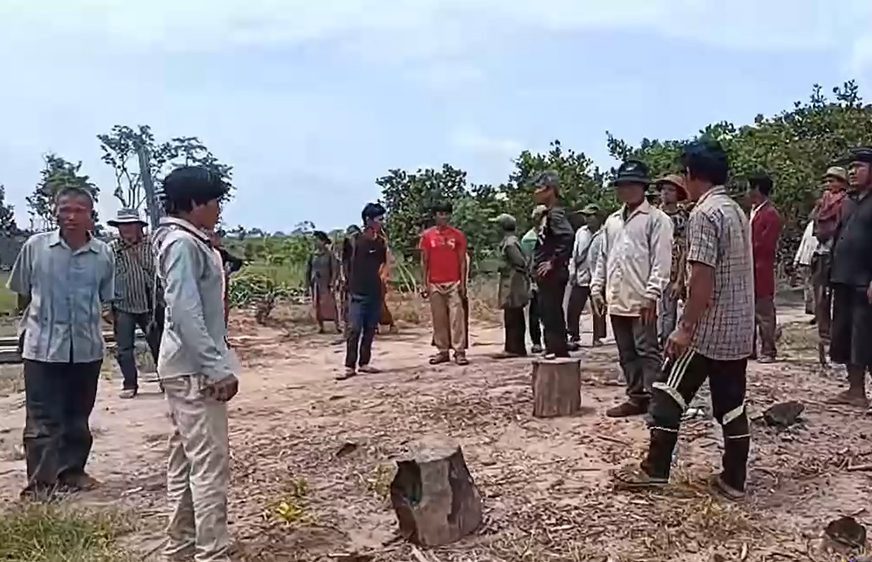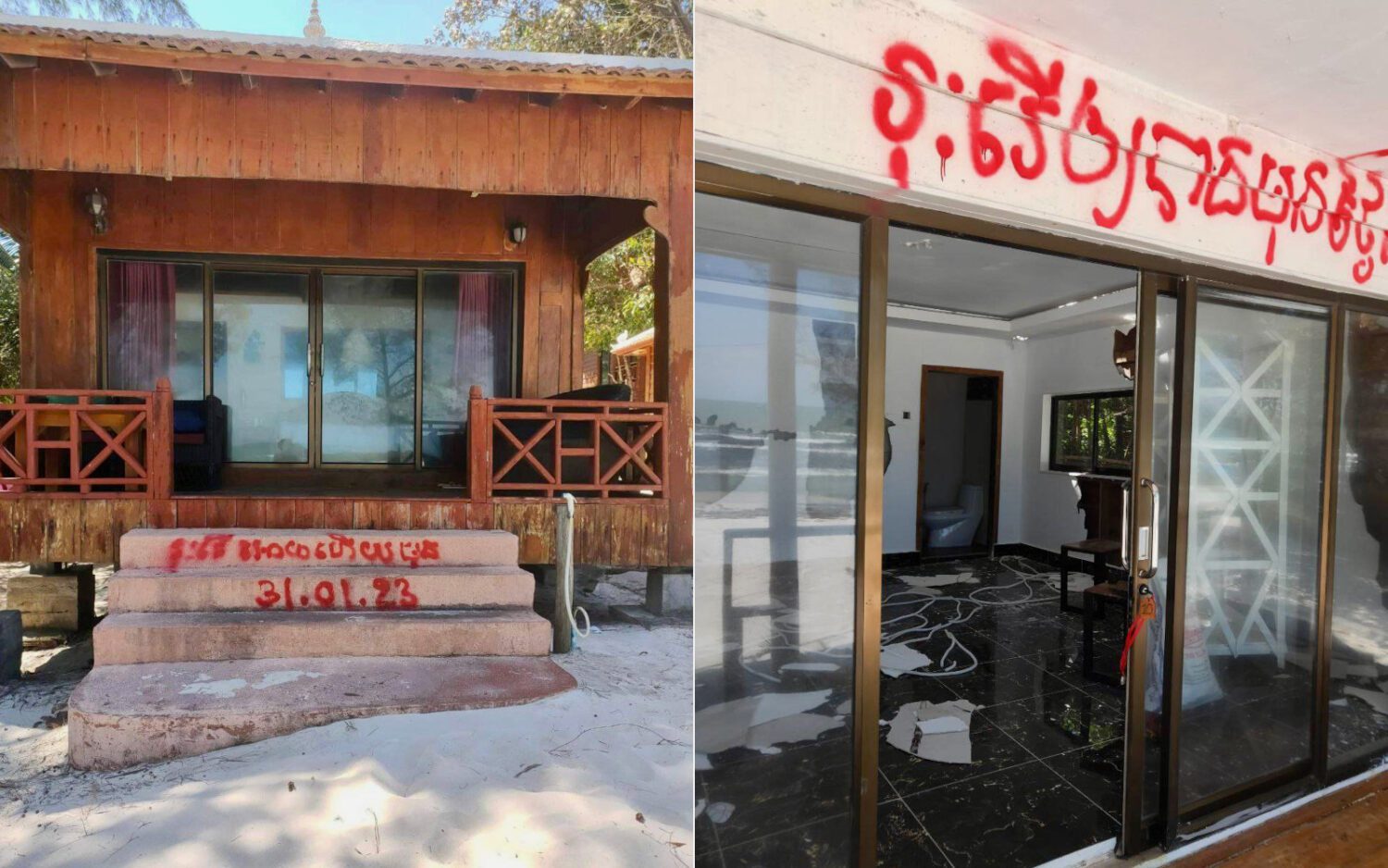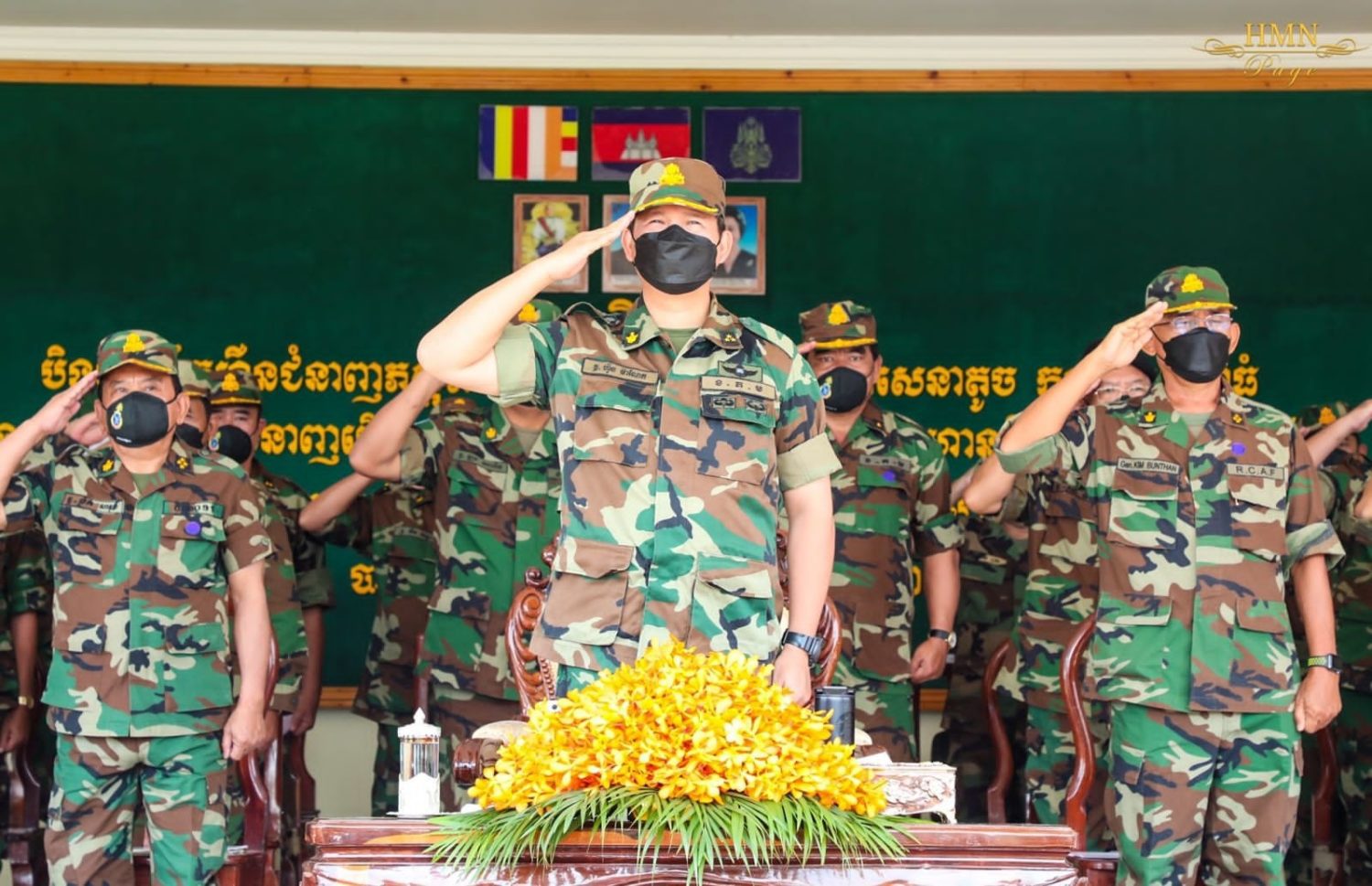A few dozen families in Stung Treng’s Sesan district are accusing an agriculture company of bulldozing the land they say they moved to after the Lower Sesan 2 Hydropower Dam flooded their land.
Phuk Kataeng, a resident of the district’s Rumpoat village, told VOD on Friday that 50 families had been competing for use of the land with a company called SK Plantation.
Kataeng said he and the other families, all Kreung indigenous people, had occupied the land since 2013, when they were forced to move to make way for the Lower Sesan 2 dam.
“Our people are suffering because the company is clearing the land,” he said. “I have 2 hectares. Now they have cleared 1 hectare and have only 1 hectare left.”
The company had been encroaching their land on and off since 2019, but had just recently started bulldozing their fields again, Kataeng claimed.
“The commune chief and the district chief do not think about helping the people. We do not know what they think,” he said. “[Company officials] are demolishing our houses, they are clearing our crops, our fields.”
Soeung Kim On, another indigenous Kreung resident of the village, said his community had suffered twice: first from losing their land to the hydropower dam in 2013 and again from this company, which he claims cleared all his cassava and rice fields.
“Our poor people have come to farm, grow cassava, grow cashews, and [their fields] have all been cleared,” he said. “They threatened to arrest us for not doing anything on our land and have evicted people two or three times, but we did not leave. I would like to call on the higher authorities to help solve this. We are very poor. There is nothing we can do.”
VOD could not reach Talat commune chief Soeun Khong nor officials from SK. According to SK Plantation’s website, the company’s owners are Singaporean, and they have been developing farms for cashews, cassava and ginger in Cambodia since 2018.
The Phnom Penh Post reported last year that the same company, which had 6,500 hectares of land in Stung Treng and Ratanakiri provinces, had bulldozed Talat commune land.
Stung Treng provincial spokesperson Meng Kong said he hadn’t heard of the issue, but suggested that the villagers should file a formal complaint, adding they could file the complaint at the provincial level if they didn’t feel the local level could respond.
Leang Bunleap, executive director of the regional NGO 3S Rivers Protection Network, said it was unfair for the Kreung indigenous community to have to fight for their land. The government and private sector were obligated to respect indigenous land claims, Bunleap said.
“If someone is an indigenous person, we have to deal with them according to the principles … which are stated in our law — not confiscate land from them or make them lose their interest [in the area], and avoid injustice to them.”













